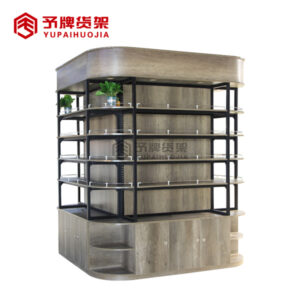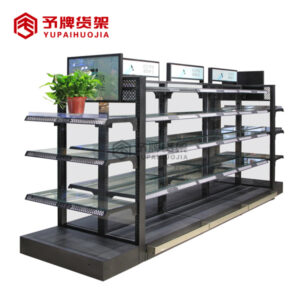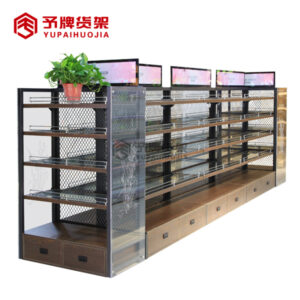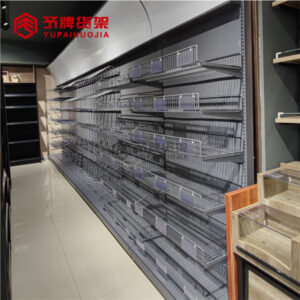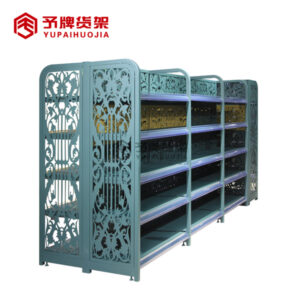The placement technique of supermarket shelves is a systematic arrangement of the products in grocery stores. This article will give you 5 tips on how to stop falling for these strategies, and save money while shopping.
How Supermarket Shelves Are Placed To Make You Spend More Money
From the moment you walk into a supermarket, you are bombarded with marketing techniques designed to make you spend more money. One of the most common – and effective – ways supermarkets encourage us to spend is by carefully placing items on the supermarket shelves.
You may not realise it, but the way supermarket shelves are arranged can have a big impact on what you buy. For example, products that are placed at eye level are more likely to be noticed and bought than those that are lower down or higher up. This is because our eyes are naturally drawn to things that are at our eye level.
Supermarkets also use what is known as the ‘golden triangle’ to place their most popular items. This is the area that is formed when you draw a line from the entrance of the store to the back, and then another line from one side of the store to the other. The items that are placed in this area are usually high-turnover items that supermarkets want us to buy.
So next time you’re doing your weekly shop, take a moment to think about how the supermarket has laid out the supermarket shelves. It might just help you save some money!
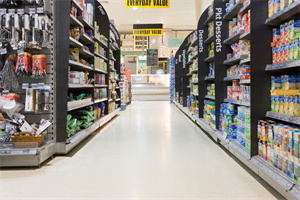
Reasons for Spending More Money
There are many reasons why supermarket shelves are placed in a way that encourages customers to spend more money. One reason is that items that are placed at eye level are generally more expensive than those placed lower down or higher up. This is because supermarkets know that customers are more likely to notice and purchase items that are at eye level.
Another reason for the strategic placement of supermarket shelves is to create a sense of urgency. Customers may be more likely to purchase an item if they believe it is in limited supply. Therefore, supermarkets often place items that they want to sell quickly (such as seasonal produce) at the end of aisles or near the entrance of the store.
Finally, supermarkets also use shelf placement to promote certain types of products over others. For example, they may place healthy food options near the entrance of the store in order to encourage customers to make better choices. Alternatively, they may place indulgent snacks and drinks near the checkout area so that customers give in to temptation after a long shopping trip.
By understanding these reasons for why supermarket shelves are designed the way they are, shoppers can be more aware of how they are being influenced by retailers. With this knowledge, shoppers can make more conscious decisions about what they purchase and where they shop.
-
 Steel stationery shop display rack for sale
Steel stationery shop display rack for sale -
 Supermarket shelves for sale in dubai
Supermarket shelves for sale in dubai -
 Pharmacy grocery display for sale
Pharmacy grocery display for sale -
 Cosmetic display shelves for shop
Cosmetic display shelves for shop -
 wholesale cosmetic display rack
wholesale cosmetic display rack -
 Supermarket Cosmetics shelves supplier
Supermarket Cosmetics shelves supplier -
 kitchenware store shelves for sale
kitchenware store shelves for sale -
 Adjustable Steel Modern Shelf Steel Shelves Grocery Shelf Mini Store
Adjustable Steel Modern Shelf Steel Shelves Grocery Shelf Mini Store -
 4 post retail shop racking display grocery item display rack supermarket shelf gondola
4 post retail shop racking display grocery item display rack supermarket shelf gondola
Why Does supermarket shelves Work?
supermarket shelves are designed to make you spend more money. Supermarkets use a variety of techniques to get you to spend more, from product placement to special offers.
Product placement is the art of putting products in strategic locations where they are more likely to be seen and bought by customers. For example, placing confectionary at eye level or at the end of aisles encourages people to buy them on impulse.
Special offers also play a role in getting people to spend more. Supermarkets will often offer discounts on certain items that are due to expire soon in order to encourage people to buy them before they go off. This is known as loss leader pricing, and it means that customers are more likely to buy other items alongside the discounted product.
All of these techniques work together to create an environment that encourages spending. So next time you’re doing your weekly shop, be aware of how supermarkets are trying to get you to open your wallet a little wider.
How Much Extra Time And Money Do We Spend In The Store?
According to a study by the Food Marketing Institute, the average American spends about $1,500 per year on impulse purchases at the grocery store. That’s about $130 per month, or $3 per day.
While some of these impulse purchases may be for items that you need, such as an extra carton of milk or a quart of ice cream, many of them are likely for items that you don’t need and could live without.
Supermarkets are designed to make you spend more time – and money – in the store. From the layout of the shelves to the way that items are priced, everything is carefully planned to get you to open your wallet a little wider.
Here are some of the ways that supermarkets trick you into spending more money:
The produce section is usually located at the front of the store, which encourages you to buy more fresh fruits and vegetables.
Items that are on sale are often placed at eye level, while regular-priced items are placed higher up or lower down.
Expensive items are often placed at eye level in the middle of the supermarket shelves, while cheaper items are placed at either end.
The bakery is usually located near the entrance, so that you’re tempted with the smell of fresh bread as soon as you walk in.
Conclusion
Supermarkets are designed to make you spend more money, and one of the ways they do this is by carefully placing items on shelves. By understanding how supermarkets use shelf placement to their advantage, you can be a smarter shopper and save money. The next time you’re at the supermarket, take a look around and see how the items are placed. You might be surprised at what you find.


